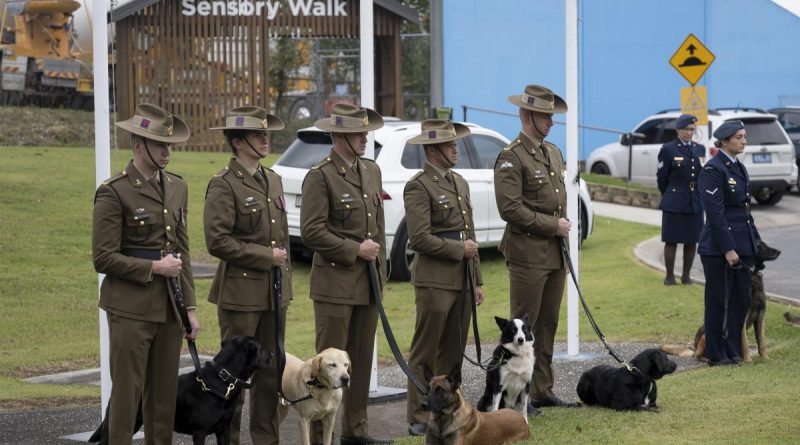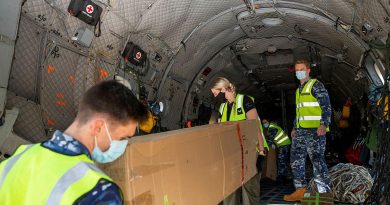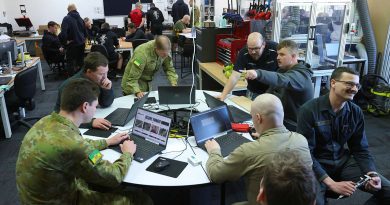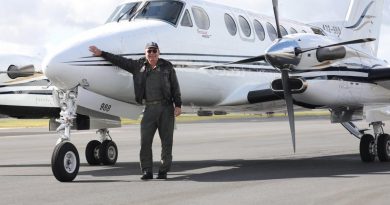Honouring our four-legged heroes

Since World War I, Australian Defence Force dogs have shown enormous courage, unwavering loyalty and commitment to hard work during training activities and on operations overseas.
CAPTION: Military Working Dog Handlers from the Australian Army’s 2nd Combat Engineer Regiment and the Royal Australian Airforce at the National Military Working Dog Day commemorative service, Wacol, Queensland, on June 7. Story by Captain Evita Ryan. Photo by Warrant Officer Class 2 Kim Allen.
They’ve served in Korea, Borneo, Vietnam, Singapore, Somalia, Bougainville, East Timor, the Solomon Islands, Afghanistan and Malaysia.
On June 7, representatives from the Army and Air Force attended a commemorative service at the Military and Service Working Dog National Monument at the RSPCA Brisbane Animal Care Campus, Wacol, Queensland, alongside other agencies that work with dogs, including the Queensland Police Service.
ADF dogs serve in Army’s Military Police, Combat Engineer Regiments, Special Operations Engineer Regiment, Special Air Service Regiment and the 2nd Commando Regiment as well as Air Force’s Security Forces Squadrons.
Hosted by the Australian Defence Force Trackers and War Dog Association, which work tirelessly to honour the work of military dogs, the National Military Working Dog Day service commemorated the sacrifice of Sapper Darren Smith and Explosive Detection Dog Herbie who, along with Sapper Jacob Moerland, were killed in action in Afghanistan on June 7, 2010.
Sapper Smith was the first ADF dog handler to be killed in action while working with a military dog.
A key driver behind the establishment of National Military Working Dog Day, Vice-President of the Australian Defence Force Trackers and War Dogs Association, Lieutenant Colonel (retd) George Hulse, said the inaugural day was commemorated 10 years ago at the Military and Service Working Dog National Monument.
“After Sapper Smith and explosive detection dog Herbie were killed, the Australian Defence Force Trackers and War Dog Association felt obliged to ensure that their deaths, alongside Sapper Jacob Moerland, were commemorated each year,” he said.
“The RSPCA gifted the parcel of land where the monument is located, and supplied designers for the monument itself, then we crowd-funded the construction before the inauguration in 2012.“Each year on the anniversary of their death, we hold a commemorative service and Graeme, Sapper Smith’s father, and Mason, Sapper Smith’s son, attend without fail.”

CAPTION: Mason Smith, son of Australian Army Soldier Sapper Darren Smith who was killed in action with his Explosive Detection Dog Herbie, lays a wreath at the National Military Working Dog Day commemorative service, Wacol, Queensland. Photo by Warrant Officer Class 2 Kim Allen.
As the Military Police Dog Capability Manager for 1st Military Police Battalion, Warrant Officer Class Two Dean Hedberg said attending the service at Wacol on National Military Working Dog Day each year was always an honour.
“Today is a deeply meaningful day,” Warrant Officer Class Two Dean Hedberg said.
“It’s a special day where we can remember the sacrifice, dedication and devotion of our fellow dog handlers and the canines that faithfully served alongside them both domestically and while on operations overseas.”
June 7 is recognised as National Military Working Dog Day.
.
.

.
.





